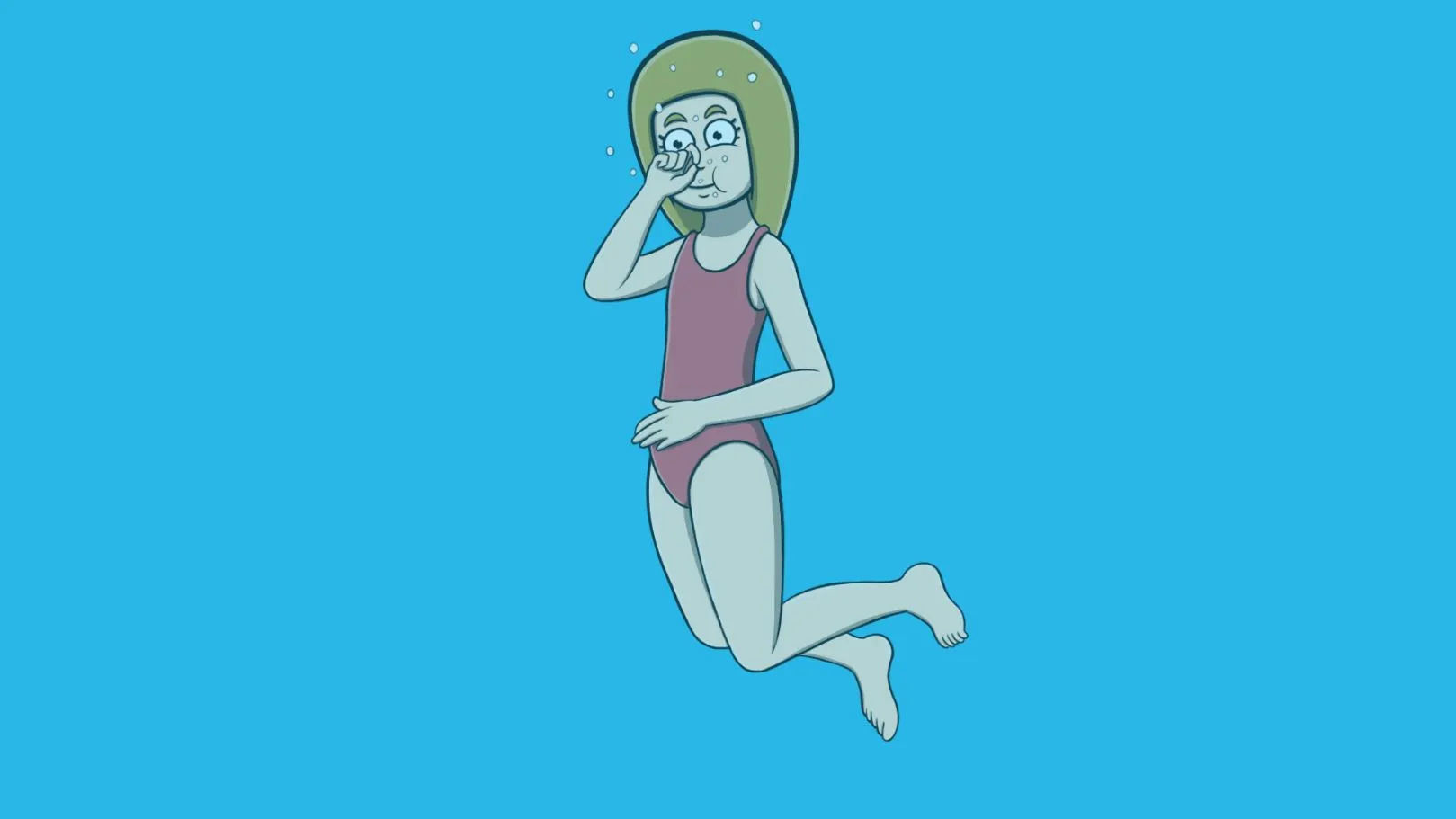Tunnel Diving
The child dives through one or more underwater tunnels using arm and leg propulsion. Pushing off from the wall is not allowed. The child must first reach the required depth, maintain it briefly, and then move forward at that depth before surfacing. The exercise can be adjusted by adding additional tunnels or increasing the distance between them. This exercise primarily trains the core elements of breathing and propulsion.
Preparation Exercises

Pressure equalization
The child dives headfirst to a depth of about 1.5 meters. As soon as they feel pressure in their ears, they should hold their nose with one hand and try to blow gently through their nose to perform a pressure equalization in their ears. It’s best to demonstrate the pressure equalization to the child on land beforehand. It is important to note that water pressure increases with depth. At around 1.5 meters, the pressure can be felt as an uncomfortable sensation in the ears. When this pressure is noticed, a pressure equalization must be performed to prevent high pressure on the ears from causing serious injury.

Water arrow to submarine
The child pushes off the surface of the water and does not glide along the surface, but towards a tunnel at the bottom of the pool. Correct arm and head control is crucial. The arms and head must be lowered in order to glide downwards. The tunnel should be far enough away to reach the required depth in time. This exercise promotes an understanding of the upper body control required when descending.

Feeling the water with your hands
Place a kickboard in the water and try to move it to the other side of the pool without touching it. The exercise can be made more challenging by using different propulsion methods, such as using only one hand, no hands at all, only the head, or only the legs. Water feel is crucial for all propulsion techniques in the water. This refers to the ability to sense water resistance and manipulate the water to achieve the desired result (in this case, moving the board forward). During this exercise, the child can focus entirely on the water feel and the water's reaction to their arm movements.





